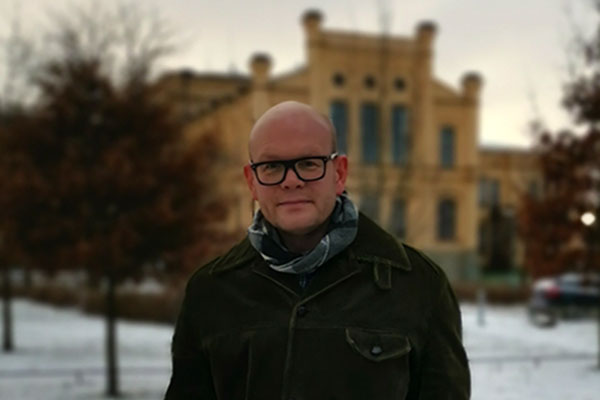Back in 1869, Claes Annerstedt, an historian who eventually served as Head Librarian of Uppsala University, launched a project that has continued to this day – the history of Uppsala University in book form. Claes Annerstedt wrote the first volume, which covered events up to 1792, just in time for the University’s 400th anniversary in 1877. The project was put on ice for many years, despite several attempts at revival. It was not until the early 2000s that Carl Frängsmyr, an historian of science and ideas, took up the mantel. This resulted in two volumes, both of which were published in 2010 – Uppsala universitet 1852–1916.
In December, the Vice-Chancellor decided to continue the book project. So, Carl Frängsmyr will now write about the remaining parts of the University’s history, covering not only the missing years, 1792–1852, but in particular the period 1916–2000. The aim is for everything to be ready by the University’s 550th anniversary in 2027.
“The History of Uppsala University is not just the history of an organisation. It is a story about human destinies, dreams and hopes that are fulfilled or go to waste. It is about power games and intrigue, about how people handled day-to-day academic life, about major discoveries and discoveries that went flat. Many events and happenings are directly dependent on individuals, so it may be a sensitive topic to discuss the value of people who are still alive or recently passed away. A certain distance is needed time-wise. I will therefore stop at the year 2000,” says Carl Frängsmyr.
In December, the Vice-Chancellor decided to continue the book project. So, Carl Frängsmyr will now write about the remaining parts of the University’s history, covering not only the missing years, 1792–1852, but in particular the period 1916–2000.
“It’s a massive project, but I don’t have to start from scratch. There is a lot of material in essays and other texts I've produced and published over the past ten years.”
Claes Annerstedt ensured that the University’s history was written by a single person rather than several authors, a notion that Carl Frängsmyr agrees with.
“Yes, it’s important to create a holistic picture. In other contexts, it may be necessary and a good idea to have multiple authors, but it can be difficult to get an overall picture if experts from different fields give their view of the history. When I sat down in 2009 to write my manuscript for the last part of The History of Uppsala University, I had a really wonderful aha-experience – I suddenly realised the context and understood why people reacted the way they did.”
Carl Frängsmyr recently completed another book project, where he served as editor – Frihet, kollegialitet, studentinflytande: Uppsala universitet under Eva Åkessons rektorat 2012–2020 [Freedom, collegiality and student influence: Uppsala University under the vice-chancellorship of Eva Åkesson 2012–2020]. The book contains contributions from about 30 people within the University who wrote about significant events during Eva Åkesson's time as Vice-Chancellor.
“It was a fun job. Having contact with new and old acquaintances at the University and getting their pieces of the puzzle to put in place. As editor, you need to standardise the texts in a way, but the individuals contributing manuscripts also have to have the freedom to express themselves as they wish. Some chapters gave rise to more discussion than others, but I am pleased with the end results.”
The History of Uppsala University will probably occupy all of his working hours, but the day has 24 hours and there is no shortage of other book projects.
“Yes, early February will see the book I am probably most proud of out of everything I've written – the essay collection Akademiska interiörer [Academic interiors]. Within the framework of the Royal Gustavus Adolphus Academy, I am preparing a study of onomastic researcher Jöran Sahlgren in connection with the 50th anniversary of his death in 1971. I am also participating in a book about Swedish tiled stoves, and will probably also complete the biography of historian Johan Nordström that my father Tore began. These are just a few examples of what I will be doing in the next few years.”
Carl Frängsmyr is interested in people and their destinies, as demonstrated in several other book projects. One example is the book Bamsingarna från Söder – 85 år med Hammarby hockey [“Bamsingarna från Söder” – 85 years of Hammarby Hockey], which he worked on together with photographer Jim Sharp in 2006.
“I don’t want to just prioritise projects that are good for my career. There are so many other fun things to write about. I sat on the board of Hammarby Hockey, and it was fun to write about their heyday in the 1930s and ‘40s. The book is full of stories about hockey and life south of Stockholm, along with photos and autographs.”
Finally, what kind of literature do you enjoy when you are not busy reading non-fiction and doing editing work?
“Unfortunately, I don’t have much time for other reading. But I recently read the crime novel Ondska utan ånger [Evil without regret] by Linda Sundgren. I found the book particularly appealing because it takes place in the archipelago outside of Vaxholm, where I spent my Christmas holiday!”
